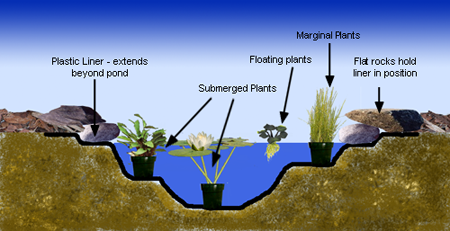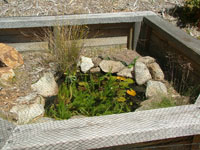Building an outdoor snake-necked turtle enclosure
This outdoor cage is also suitable for reptiles such as blue tongue skinks, bearded dragons and other medium sized lizards.
by Mark Chapple
Snake–necked turtles are a hardy reptile that take to captivity well. While they can live in a heated tank for many years, we decided to build an outdoor enclosure for Shelley, our turtle. It would be a simple matter to have and indoor for winter and an outdoor enclosure for the summer months but the climate is mild enough, with no frosts and rarely any sub-zero temperatures, for Shelley to live outdoors permanently. They were also known to live in the local wetlands.
There were a few things that had to be taken into consideration.
- It had to be large so a pond could be made that was big enough to house a snake-necked turtle and aquatic plants she could hide amongst
- The turtle also needed to be able to get out onto dry land easily and.
- The cage needed measure to prevent escape by digging (we also pop the blue tongues into the enclosure during the summer months)
- It had to be too high to climb out of
- Have enough protection to prevent predators (birds, foxes) taking any animals from within the enclosure
We also wanted to be able to sit around it and use it as garden decor.
Initially we tried to build a concrete pond. A large hole was dug, about 4ft x 3ft and 18'' deep. Chicken mesh was then used to mould the shape within the hole and hold the cement in place (U shapes pieces of wire inserted into the ground held it in place). This worked well and the pond looked quite good. However the treatment we used for the cement to prevent leakage leached into the water and poisoned it. It seemed to keep on coming out of the cement, no matter how often we changed the water so we decided to break this structure down and opted for a heavy duty plastic liner, which has been very successful. There are probably non-toxic water treatments available but we had no knowledge of these at the time.
It was important when digging the pond hole to make tiers for the various plants within the pond and also to make tiers around the top edge. The plastic liner is held in place using flat rocks placed on it on the top tier. The liner also extends out beyond the holding rocks into the mulched area, hiding it and making the whole scene more natural (see diagram). When you purchase your liner, you need to make sure that the lining piece is large enough to go down into the pond, cover the tiers and also extend out beyond the pond boundaries.
The enclosure itself is made from sturdy timber posts - we used about 5 8ft x 8'' x 3'' sleepers. These are buried into the ground and timber walls are attached to timber on the side of the posts. Solid timber pieces go around the top using coach screws recessed into the timber so people can sit on them and look into the enclosure.
Around the base of the enclosure between the posts we hammered thick wire (fencing wire) pieces about 8'' into the ground every inch or so (we actually cheated and bent 16'' piece into a U shape and hammered these into the ground). These create an underground “cage” that prevent the animals digging their way out. An alternative is to bury iron or cement sheeting into the ground to a depth of about 8-10 inches.
Once the enclosure was completed we planted some hardy native plants and grasses, added some timber, rocks and iron sheets and mulched the entire area.
To stop the predators we purchased some bird netting and some elastic “rope”. The "rope" was threaded through the netting and tied off to make a cover that can be stretched over the top of the enclosure and removed easily for access.
Shelley has been living out there for three years now and is very happy – turtles seem to smile. She always comes to the surface to say hello (probably to check for food if I was honest with myself) and we sometimes find her sunning herself on the rocks.
If you have the room around your home I can recommend an enclosure like this. Visitors love to sit around it and it is a decorative and functional addition to any garden.

Outdoor pond - side view detailing structure.
Below is a series of images of the turtle enclosure. Click on images for larger view in new window.
Mark Chapple is the Author of "How to build enclosures
for reptiles"
Find out how to make reptile cages including arboreal cages. Full color
pictures, detailed diagrams and easy to follow, step-by-step instructions.
http://www.reptile-cage-plans.com




